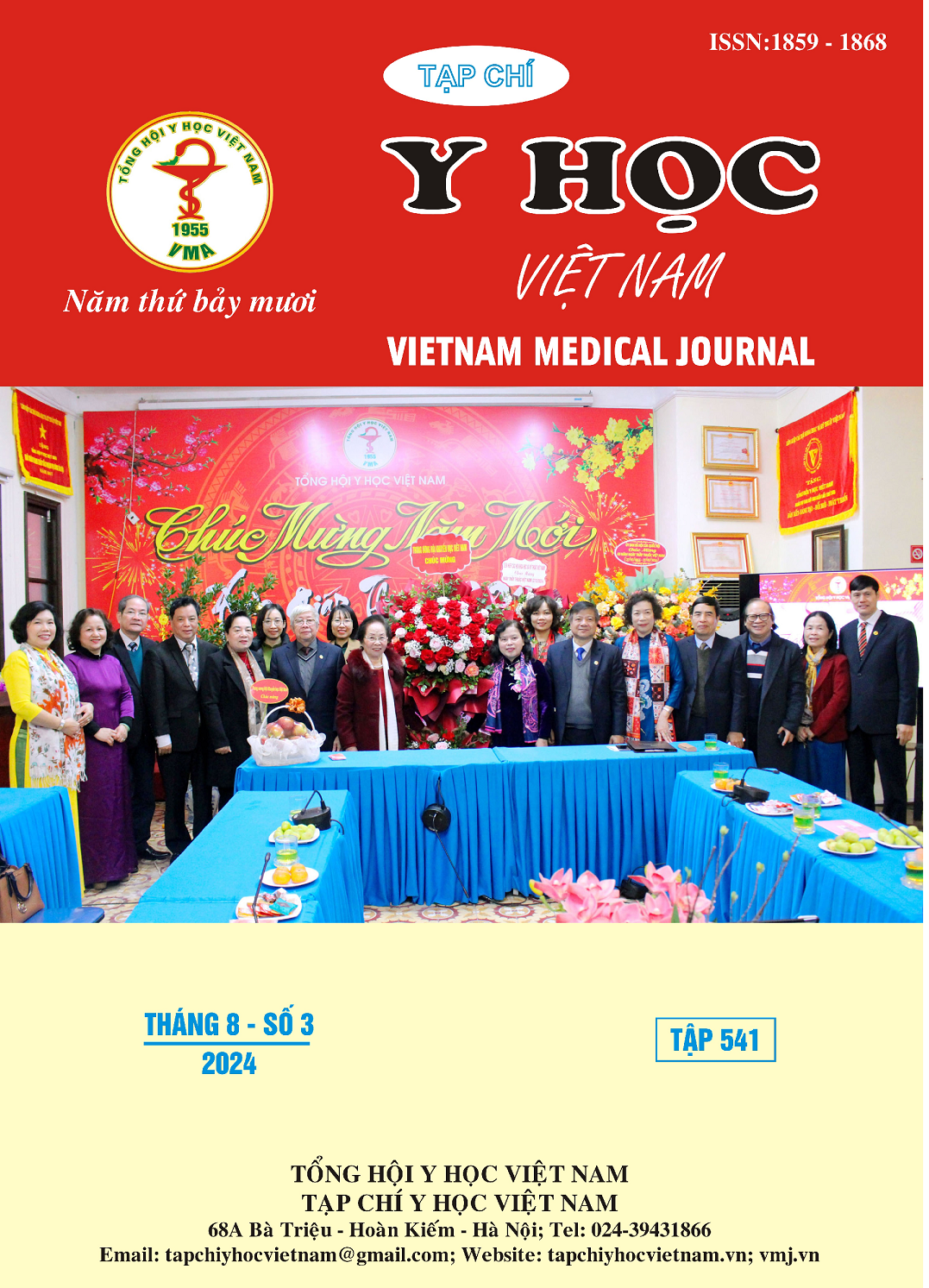TÌNH HÌNH KHÁNG KHÁNG SINH CỦA PSEUDOMONAS AERUGINOSA TẠI BỆNH VIỆN ĐA KHOA TỈNH BẮC GIANG NĂM 2023
Nội dung chính của bài viết
Tóm tắt
Pseudomonas aeruginosa là một mầm bệnh cơ hội gây ra nhiều bệnh nhiễm trùng, nhiễm khuẩn bệnh viện, cùng với đó, tình trạng kháng kháng sinh trầm trọng của vi khuẩn này cũng khiến cho việc điều trị gặp nhiều trở ngại. Phương pháp: Nghiên cứu cắt ngang nhằm xác định đặc điểm phân bố và tình hình kháng kháng sinh của các chủng P. aeruginosa phân lập được tại bệnh viện đa khoa tỉnh Bắc Giang năm 2023. Kết quả: Trong tổng số 162 chủng P. aeruginosa gây bệnh phân lập trong thời gian nghiên cứu, các chủng P. aeruginosa phần lớn được phân lập từ bệnh phẩm hô hấp và nước tiểu, chiếm tỷ lệ lần lượt là 59,9% và 26,5% tổng số chủng. P. aeruginosa có tỷ lệ phân lập cao ở nhóm người bệnh ≥60 tuổi (58,7%), người bệnh điều trị ở khoa ICU (hồi sức tích cực) (59,9%) và nam giới (78,4%). Các chủng P. aeruginosa được phân lập đề kháng thấp nhấp với kháng sinh Colistin (6,1%), Ceftazidime-Avibactam (33,5%) và đề kháng cao nhất với Ciprofloxacin (67,7%). Tỉ lệ đề kháng của P.aeruginosa với Piperacilin-Tazobactam là 58,6%, Aztreonam 55,6%, Ceftazidime 59,3%, Cefepime 60,5%, Imipenem 65,4%, Meropenem 64,2%, Levofloxacin 66,4%. Kết luận: Đặc điểm phân bố P. aeruginosa có mối liên quan với các yếu tố độ tuổi, bệnh phẩm, khoa/phòng điều trị và giới tính. Các kháng sinh Colistin và Ceftazidime-Avibactamm có thể là những lựa chọn phù hợp trong điều trị nhiễm trùng do P. aeruginosa.
Chi tiết bài viết
Từ khóa
Pseudomonas aeruginosa, kháng kháng sinh, bệnh viện đa khoa tỉnh Bắc Giang.
Tài liệu tham khảo
2. Horan, T.C., M. Andrus, and M.A. Dudeck, CDC/NHSN surveillance definition of health care-associated infection and criteria for specific types of infections in the acute care setting. Am J Infect Control, 2008. 36(5): p. 309-32.
3. Sader, H.S., et al., Geographical and temporal variation in the frequency and antimicrobial susceptibility of bacteria isolated from patients hospitalized with bacterial pneumonia: results from 20 years of the SENTRY Antimicrobial Surveillance Program (1997-2016). J Antimicrob Chemother, 2019. 74(6): p. 1595-1606.
4. Bộ Y tế, Hướng dẫn quy trình kỹ thuật chuyên ngành vi sinh y học. Thư viện pháp luật, 2014.
5. Clinical and laboratory standards institute (CLSI), Performance Standards for Antimicrobial Susceptibility Testing, 34th Editio. 2023.
6. Lưu Thị Nga và cộng sự, Tình hình kháng kháng sinh của Pseudomonas aeruginosa phân lập được tại bệnh viện đa khoa quốc tế Hải Phòng năm 2022. Tạp chí Y học Việt Nam, 2024. 537(1).
7. Lê Văn Cường và cộng sự, Sự phân bố và tính kháng thuốc của trực khuẩn mủ xanh tại bệnh viện đa khoa tỉnh Thanh Hóa năm 2020. Tạp chí Y học Việt Nam, 2022. 511(1).
8. Nguyễn Thị Huyền và cộng sự, Mức độ kháng kháng sinh của pseudomonas Aeruginosa phân lập được tại bệnh viện trung ương Thái Nguyên 2017-2021. Tạp chí Y học Việt Nam, 2023. 523(1).
9. Nguyễn Hữu Ngọc Tuấn và cộng sự, Đặc điểm phân bố và tính kháng kháng sinh của Pseudomonas aeruginosa tại bệnh viện Nguyễn Tri Phương giai đoạn 2020 - 2023. Tạp chí Y học Việt Nam, 2024. 536(1B).


